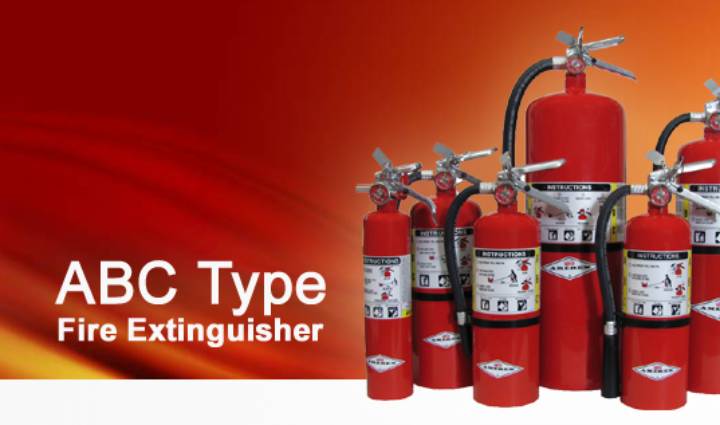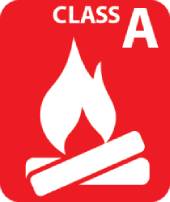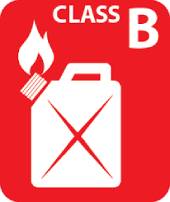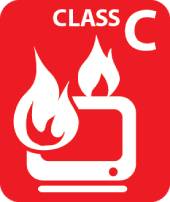


“A” TRASH–WOOD–PAPER :
Fire extinguishers with a Class A rating are effective against fires involving paper, wood, textiles, and plastics. The primary chemical used to fight these fires is monoammonium phosphate, because of its ability to smother fires in these types of materials.

“B” LIQUIDS :
Fire extinguishers with a Class B rating are effective against flammable liquid fires. These can be fires where cooking liquids, oil, gasoline, kerosene, or paint have become ignited. Two commonly used chemicals are effective in fighting these types of fires. Monoammonium phosphate effectively smothers the fire, while sodium bicarbonate induces a chemical reaction which extinguishes the fire.

“C” ELECTRICAL EQUIPMENT:
Fire extinguishers with a Class C rating are suitable for fires in “live” electrical equipment. Both monoammonium phosphate and sodium bicarbonate are commonly used to fight this type of fire because of their nonconductive properties.
Fire Extinguisher Ratings
Fire extinguishers are classified by fire type. The A, B, C rating system defines the kinds of burning materials each fire extinguisher is designed to fight. The number in front of the A, B, or C indicates the rating
size of fire the unit can extinguish.
To achieve a Class “A” rating, the extinguisher must be capable of putting out the wood crib, wood panel and excelsior (shredded paper) tests. Ratings are based on the
size of the material that can be repeatedly extinguished.
